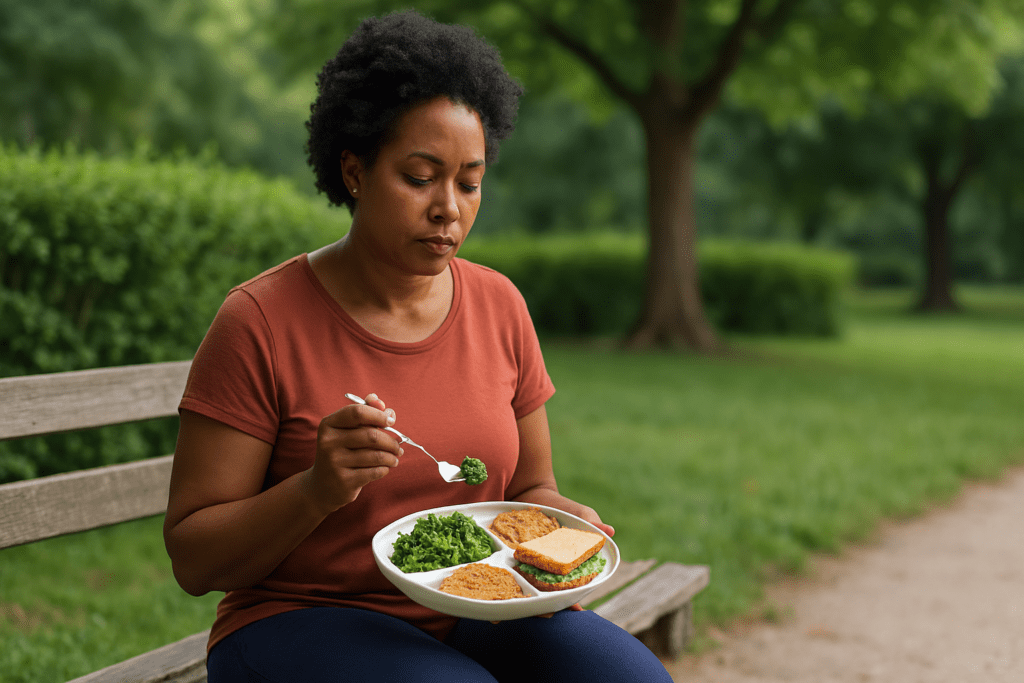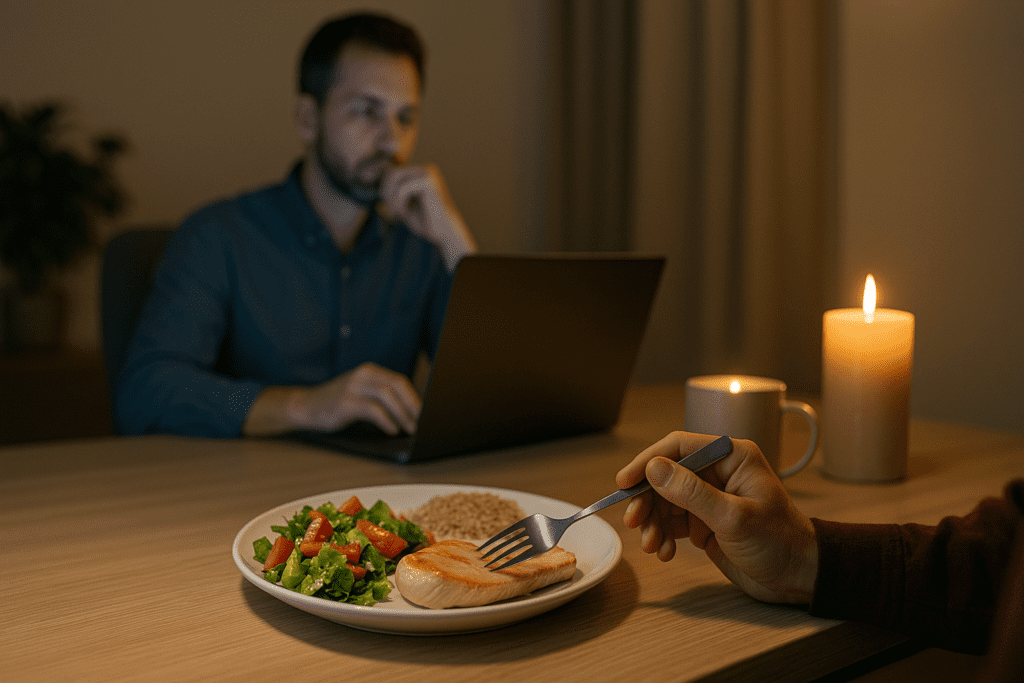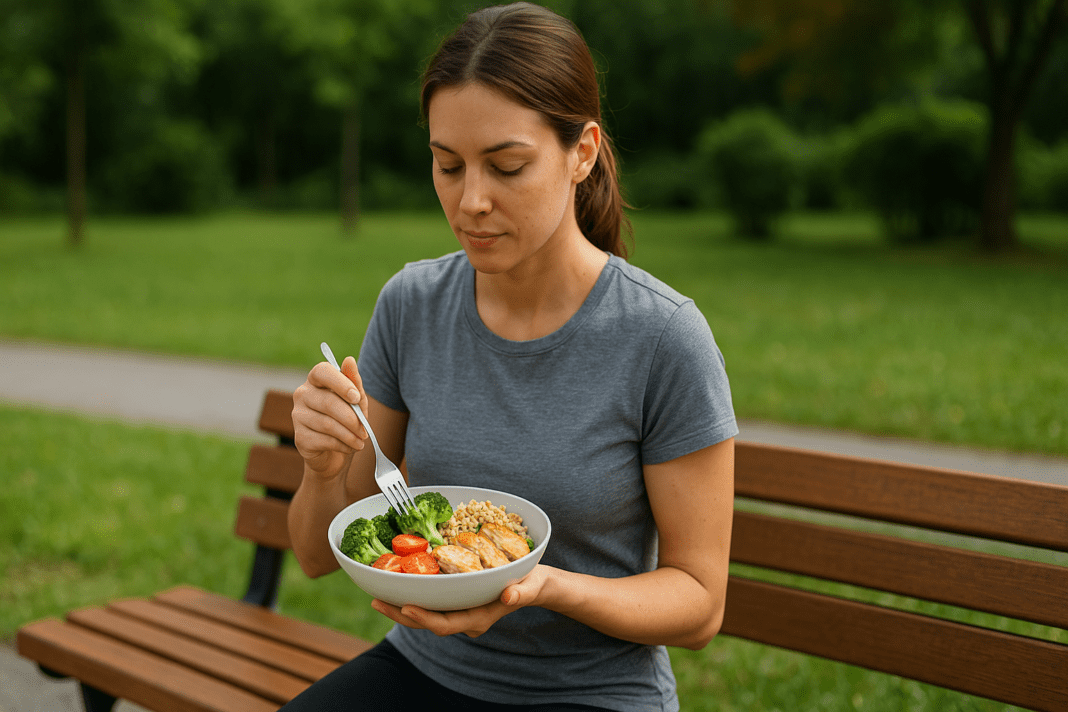Maintaining energy and focus throughout the day often hinges on what we eat for lunch. While many traditional lunch options are heavy, calorie-dense, and often leave us feeling sluggish, the rise of 300 calorie lunch meals offers a smarter, more sustainable alternative. These meals prioritize nutrient density over volume, encouraging a mindful approach to eating that supports both weight management and long-lasting energy. Far from being restrictive, they present an opportunity to nourish the body with intention, aligning with both health goals and a modern lifestyle.
You may also like: Smart Eating on a Budget: How to Create Cheap Healthy Meals Without Sacrificing Nutrition
The Power of 300 Calorie Lunches in a Balanced Diet
Choosing a 300 calorie lunch doesn’t mean sacrificing satisfaction or nutritional adequacy. When thoughtfully constructed, these meals can deliver a balance of essential macronutrients—protein, carbohydrates, and healthy fats—while staying within a controlled calorie range. This makes them an ideal tool for individuals aiming to manage their weight or regulate energy levels throughout the day. Rather than relying on processed diet foods or skipping lunch altogether, a well-crafted low-calorie meal can offer fullness, flavor, and fuel in equal measure.
These meals can also support a plant-based eating pattern, which has been linked in numerous studies to reduced inflammation, improved cardiovascular function, and better digestive health. By focusing on whole foods and portion control, 300 calorie lunch meals become an accessible strategy for improving long-term wellness.

Essential Components of a Nutrient-Dense 300 Calorie Meal
The key to creating satisfying 300 calorie lunch meals lies in the selection of high-volume, nutrient-dense ingredients. Whole grains such as brown rice, bulgur, or quinoa provide complex carbohydrates that deliver steady energy. Legumes like lentils, chickpeas, and black beans contribute plant-based protein and fiber, both of which are vital for satiety and metabolic health.
Healthy fats, though calorie-dense, are essential in small quantities. A quarter of an avocado, a teaspoon of olive oil, or a few crushed walnuts can elevate both flavor and nutritional value. Meanwhile, non-starchy vegetables like spinach, kale, zucchini, and bell peppers add bulk without pushing the calorie count too high. By layering these components thoughtfully, individuals can enjoy a lunch that satisfies hunger and supports wellness without excess calories.

Meal Preparation Strategies That Foster Consistency
The sustainability of a 300 calorie lunch strategy largely depends on meal preparation. In a world where time is scarce and convenience is king, having healthy meals ready to go can make the difference between eating well and resorting to ultra-processed options. Preparing ingredients in bulk—like cooking a large batch of lentils or chopping an assortment of vegetables—makes it easier to mix and match components during the week.
Containers with portion indicators or digital kitchen scales can help ensure that meals stay within the desired calorie range without the need for guesswork. Over time, this builds intuitive awareness of portion sizes. Adding variety through herbs, spices, and homemade dressings prevents taste fatigue while keeping meals exciting. For instance, a lentil quinoa salad can take on a Mediterranean flair with lemon and oregano or a Southwest twist with lime and cumin.

Maintaining Afternoon Energy and Focus
Lunch is not just about physical nourishment—it plays a critical role in mental performance. A balanced, moderate-calorie meal helps regulate blood sugar, preventing the mid-afternoon crash that often follows a high-carb, high-fat lunch. The inclusion of fiber and protein slows digestion, which helps maintain steady glucose levels and supports sustained mental clarity.
Micronutrients also play a role in cognitive function. Magnesium and potassium, found in leafy greens and legumes, help regulate nerve function, while B vitamins contribute to energy production at the cellular level. Choosing a 300 calorie lunch made from whole foods can thus have a profound impact not just on physical wellness, but on productivity and emotional stability during the second half of the day.
Weight Management Benefits of a 300 Calorie Lunch
A consistent, moderate lunch is a strategic way to promote healthy weight loss or maintenance. When calories are consumed in a balanced way throughout the day—rather than in large, sporadic meals—it helps stabilize hunger hormones and improve insulin sensitivity. 300 calorie lunch meals make it easier to create a modest calorie deficit without triggering hunger or the desire to binge later in the day.
Importantly, these meals don’t rely on deprivation. Instead, they support weight management by emphasizing foods that are naturally satiating. Soluble fiber from legumes, whole grains, and vegetables slows gastric emptying, while lean plant proteins contribute to fullness and muscle preservation. These meals help people feel good physically and emotionally—reducing the guilt, shame, and mental fatigue often associated with restrictive dieting.
Challenging the Myths About Low-Calorie Meals
There’s a common misconception that meals under 400 calories are too small to be satisfying or enjoyable. However, satisfaction is not only a matter of calories—it’s also influenced by texture, temperature, aroma, and visual appeal. A warm bowl of vegetable and lentil stew, a vibrant salad with a tahini dressing, or a chickpea wrap with roasted vegetables can all feel indulgent despite their modest calorie content.
When meals are rich in color, layered in flavor, and eaten mindfully, they deliver a multisensory experience that satisfies both body and mind. Moreover, the association between lower calorie meals and restriction begins to dissolve as individuals experience the nourishment and vitality these meals can provide. With intentional preparation, even a 300 calorie lunch can become the most anticipated part of the day.
Examples of Satisfying 300 Calorie Lunch Meals
Consider a roasted sweet potato split open and stuffed with black beans, red cabbage, and a spoonful of guacamole. This colorful, flavorful dish provides fiber, protein, and healthy fats in a single satisfying package. Another example is a mason jar salad layered with greens, quinoa, edamame, shredded carrots, cherry tomatoes, and a lemon-miso dressing—visually appealing and rich in nutrients.
Soup is another versatile and practical format. A homemade tomato and lentil soup, thickened with pureed beans and topped with fresh herbs, can be filling and comforting without exceeding 300 calories. Each of these meals highlights how whole food combinations can be both nutritionally dense and calorically appropriate, promoting satiety without compromise.
Emotional Wellbeing Through Mindful Eating
Choosing a 300 calorie lunch meal is not just about controlling intake—it’s about making space for mindful eating. By dedicating time to savor meals, individuals can cultivate a deeper connection to their food. This can enhance digestion, reduce overeating, and build a healthier relationship with food overall.
Rather than eating on autopilot or while distracted, taking time to chew, taste, and appreciate the meal fosters mindfulness and emotional regulation. Over time, this approach can lead to greater self-awareness, reduced stress eating, and more consistent adherence to wellness goals. In this way, the impact of a low-calorie lunch extends far beyond the plate—it becomes a daily opportunity for self-care.
The Transformative Power of Small Daily Choices
The cumulative effect of choosing 300 calorie lunch meals is significant. Over weeks and months, these meals help regulate appetite, improve metabolic markers, and build a foundation of consistent, health-supportive behavior. They make healthy eating feel manageable, even during hectic workdays, and help individuals stay aligned with their long-term goals without relying on willpower alone.
Moreover, these meals demonstrate that a healthy lifestyle does not require perfection or complexity—only intentionality. A single small change, like swapping a fast-food lunch for a home-prepped bowl of grains and greens, has the potential to shift not only physical health but also mindset and habits. When done consistently, such changes can reshape one’s approach to food, energy, and self-worth.
Frequently Asked Questions: Smart 300 Calorie Lunch Meals
1. Can 300 calorie lunch meals support active lifestyles or workouts? Yes, 300 calorie lunch meals can absolutely support active individuals, particularly when they are nutritionally dense and strategically timed. For those who exercise regularly, it’s important to ensure that these meals provide adequate protein, fiber, and complex carbohydrates to replenish glycogen and promote muscle repair. A 300 calorie lunch can serve as a bridge between larger meals, especially when paired with balanced snacks before or after workouts. Athletes may choose to consume a 300 calorie lunch earlier in the day and complement it with a nutrient-rich post-exercise meal or smoothie. This approach maintains energy levels while aligning with calorie goals and preventing overconsumption later in the day.
2. How do 300 calorie lunch meals impact blood sugar stability for people with prediabetes or type 2 diabetes? Well-composed 300 calorie lunch meals are especially beneficial for individuals managing blood sugar concerns. Meals that are low in added sugars and rich in fiber, protein, and healthy fats help slow digestion and reduce glucose spikes. When 300 calorie lunches incorporate ingredients like lentils, leafy greens, and whole grains, they promote a steady release of energy and support insulin sensitivity. For people with diabetes or prediabetes, consistent meal timing and portion control—such as that found in 300 calorie meals—are essential strategies for glycemic regulation. Moreover, these meals can be customized to reduce carbohydrate load without compromising flavor or satisfaction.
3. Are 300 calorie lunch meals practical for families with children? While children generally require higher caloric intake than adults, the concept of a 300 calorie lunch can still be useful for family meal planning. For kids, these meals can serve as portion-controlled components of a larger plate or act as a healthy snack alternative. Parents can introduce the idea of 300 calorie meals to model mindful eating without making food feel restrictive. For example, a child’s lunchbox might include a 300 calorie main dish like a veggie wrap or quinoa salad, along with fruits and a dairy item to meet their caloric needs. The flexibility of these meals makes them a practical, scalable solution for diverse nutritional requirements within a household.
4. How do 300 calorie lunches compare nutritionally to meal replacement shakes or bars? While meal replacement products offer convenience, they often lack the phytonutrients and fiber found in whole-food-based 300 calorie lunch meals. Shakes and bars can sometimes rely heavily on synthetic ingredients, artificial sweeteners, or isolated protein powders, which may not provide the same satiety or long-term metabolic benefits. In contrast, 300 calorie lunch meals made from real foods contribute antioxidants, plant compounds, and digestive support that processed options may lack. Eating whole foods also supports chewing and digestion, which plays a role in satiety signals. Choosing whole-food lunches over meal replacements can enhance microbiome diversity and support more sustainable eating patterns.
5. Can rotating different 300 calorie lunch meals improve gut health? Absolutely. Diversity in plant-based ingredients is one of the most effective ways to support a healthy gut microbiome. By rotating various 300 calorie lunch meals that include different legumes, grains, and vegetables, individuals expose their gut to a broader array of fibers and prebiotics. For instance, switching between lentil stew, quinoa-stuffed peppers, and chickpea salads ensures that different bacterial strains are nourished, which enhances microbial diversity. The result is better digestion, stronger immunity, and even potential improvements in mood due to the gut-brain axis. Regularly introducing new ingredients into your 300 calorie lunch routine offers both nutritional and microbial benefits.
6. How can someone track calories accurately without becoming obsessive? Accurate calorie tracking for 300 calorie lunch meals doesn’t have to be stressful or time-consuming. Initially, using a digital food scale and meal tracking app can help individuals become more aware of portion sizes and ingredient values. Over time, many people develop visual cues and intuitive eating skills that allow them to estimate meal components more naturally. The key is to use tracking as a learning tool rather than a rigid rulebook. Focusing on consistency rather than perfection helps maintain balance, and occasionally eating slightly over or under 300 calories won’t derail long-term progress. The ultimate goal is mindful, empowered eating—not micromanagement.
7. Are there cultural or regional variations of 300 calorie lunch meals that offer unique benefits? Yes, exploring global cuisines is a great way to add variety and richness to your 300 calorie lunch routine. Mediterranean mezze, Indian lentil dals, Japanese bento-style meals, and Latin American bean-based dishes all offer nutrient-dense, lower-calorie options rooted in traditional diets. These regional meals often emphasize whole plant foods, herbs, and spices, which enhance both flavor and health benefits. Incorporating cultural variations helps combat taste fatigue and supports more inclusive, sustainable eating habits. It also fosters appreciation for ancestral dietary patterns that naturally align with modern nutrition science.
8. How do 300 calorie lunch meals align with intermittent fasting or time-restricted eating? Many people practicing intermittent fasting find that 300 calorie lunch meals fit seamlessly into their eating windows. For those following a 16:8 or 14:10 time-restricted model, a 300 calorie lunch can serve as the first or second meal depending on the fasting schedule. The moderate calorie load allows for better energy management during shorter eating windows while maintaining satiety. These meals also help prevent overconsumption later in the window, especially when they include adequate protein and fiber. Aligning your 300 calorie lunch with circadian rhythms and fasting periods may enhance metabolic outcomes, including fat oxidation and insulin sensitivity.
9. What are some emerging ingredients or trends that elevate 300 calorie lunches? Innovative plant-based ingredients are reshaping the way we build 300 calorie lunch meals. Jackfruit, lupini beans, sea vegetables like dulse, and fermented legumes are gaining popularity for their nutrient density and culinary versatility. Advances in plant protein technology have also introduced lower-calorie, high-protein options like fava bean-based dips or chickpea pastas. These ingredients can diversify 300 calorie lunch menus while offering functional health benefits, such as improved digestion or better cardiovascular profiles. Keeping up with emerging trends helps ensure that your lunches remain both enjoyable and aligned with the latest in nutritional science.
10. What is the psychological impact of consistently eating 300 calorie lunches? Adopting the habit of eating 300 calorie lunch meals can lead to a profound psychological shift in how individuals relate to food. Rather than feeling deprived, many people experience increased self-efficacy and autonomy by learning to create satisfying meals within clear, supportive boundaries. The predictability of calorie-controlled meals reduces decision fatigue and helps individuals feel more in control of their health journey. Over time, this can reduce emotional eating, enhance body image, and promote long-term consistency. In essence, choosing 300 calorie lunches becomes an act of self-care that extends far beyond physical nourishment.
Conclusion: A Balanced Future Begins with a Smarter Lunch
Embracing the concept of the 300 calorie lunch is more than a nutritional strategy—it’s a lifestyle upgrade that prioritizes balance, satisfaction, and long-term wellness. These meals offer an elegant solution to the modern dilemma of convenience versus health. By centering meals on whole, plant-based ingredients and maintaining portion awareness, individuals can meet their energy needs, manage weight effectively, and improve their overall relationship with food.
Smart 300 calorie lunch meals serve as daily reminders that eating well doesn’t require sacrifice—it requires intention. With creativity, preparation, and a focus on nutrient-dense ingredients, these meals become not just a means to an end, but a celebration of what it means to nourish the body and support lasting vitality. In an age of dietary confusion and contradictory health advice, this simple yet powerful approach offers clarity, consistency, and hope for a healthier tomorrow.
low calorie lunch ideas, healthy meal prep lunch, portion control meals, plant-based lunch recipes, nutrient-dense meals, balanced lunch for energy, vegetarian lunch options, mindful eating habits, high fiber lunches, heart-healthy lunch ideas, clean eating meals, whole food lunch recipes, low calorie meal planning, anti-inflammatory lunch ideas, macro balanced meals, energizing plant-based foods, easy healthy lunch recipes, smart lunchbox ideas, wellness-focused nutrition, sustainable eating patterns
Further Reading:
Under 300 calories wholesome lunch combos
17 Healthy Lunch Ideas for Weight Loss
26 Lunches Under 400 Calories That Are Perfect for Meal Prep
Disclaimer
The information contained in this article is provided for general informational purposes only and is not intended to serve as medical, legal, or professional advice. While NewsHealthWatch strives to present accurate, up-to-date, and reliable content, no warranty or guarantee, expressed or implied, is made regarding the completeness, accuracy, or adequacy of the information provided. Readers are strongly advised to seek the guidance of a qualified healthcare provider or other relevant professionals before acting on any information contained in this article. NewsHealthWatch, its authors, editors, and contributors expressly disclaim any liability for any damages, losses, or consequences arising directly or indirectly from the use, interpretation, or reliance on any information presented herein. The views and opinions expressed in this article are those of the author(s) and do not necessarily reflect the official policies or positions of NewsHealthWatch.

